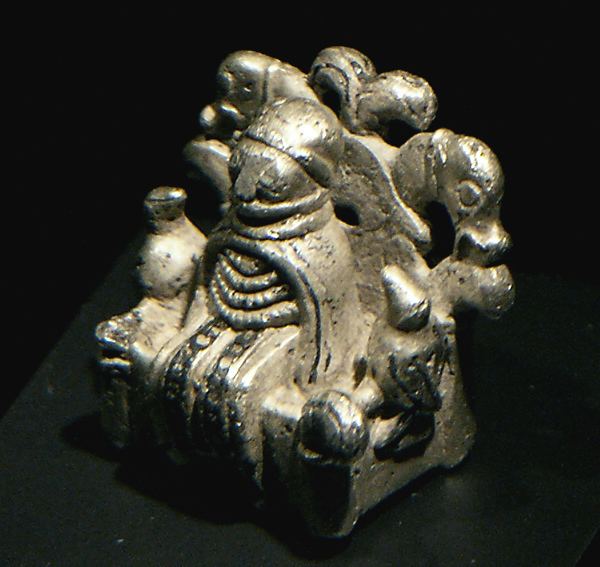 | ||
Odin from Lejre is a small cast silver figurine from approximately 900 C.E., depicting an individual on a throne wearing a floor-length dress, an apron, four bead necklaces, a neck ring, a cloak and a rim-less hat. Two birds are seated on the armrests and the back of the throne features the heads of two animals. The figurine has inlay of black niello (black coloured alloy) and some gilding. The figure measures 18 mm in height and weights 9 grams. The figurine was found by local amateur archaeologist Tommy Olesen on September 2, 2009, during the Roskilde Museum excavations of a small village at Gammel Lejre ("Old Lejre") near the modern town of Lejre, Denmark. The figurine was unveiled at the Roskilde Museum on November 13, 2009, and is now part of the permanent exhibition.
The identity of the figure depicted has been the subject of some dispute. The excavator interpreted it as the god Odin sitting on his throne Hliðskjálf, from which he sees into all the worlds. The birds would be the ravens Huginn and Muninn, who gathered information for Odin. The beast-heads might symbolise Odin's two wolves, Geri and Freki. However, some scholars specialising in Viking Age dress and gender representation have pointed out that the person is dressed entirely in female attire, resulting in theories that the figure may in fact represent either the goddesses Frigg or Freyja. Parallels have been pointed to between "Odin from Lejre" and a silver figure often identified as Freyja found in Aska, Sweden.
